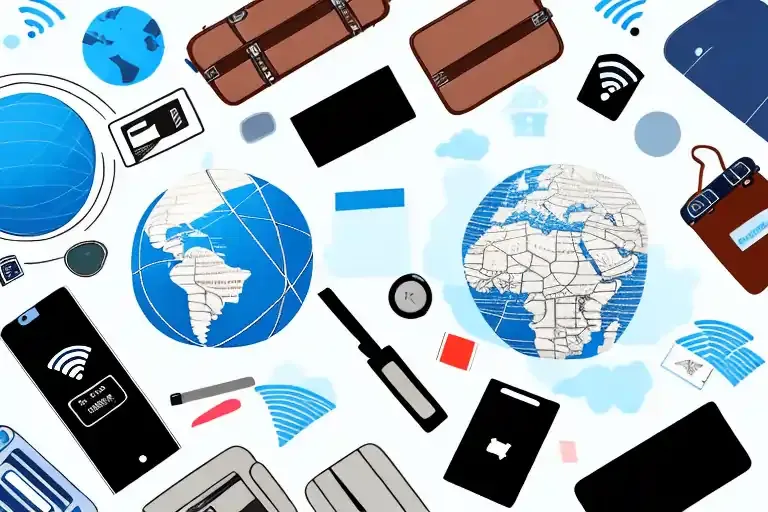eSIM
Why do travel eSIMs need me to turn on data roaming?
The mechanics of travel eSIMs and data roaming
In an era where staying connected is paramount, there exists many connectivity solutions for frequent travelers and individuals who are traversing borders. One of the most common methods for staying connected today is to get a travel eSIM. If you have used a travel eSIM, or are considering using one, you might have noticed that the installation and activation guide typically requires you to enable data roaming on your phone. Let's take a deeper look at why that might be required, and whether you need to be concerned.

What is Data Roaming?
Data roaming is a service provided by mobile network operators that allows you to use your mobile device to connect to the internet while you are outside the coverage area of your home network. In simpler terms, it enables your phone or other connected devices to access the internet using a different carrier's network when you're in a foreign country.
Highly rated 4.4/5.0 on Trustpilot
Save up to 50% on roaming
Fast and reliable network
How does Data Roaming work?
Mobile network operators have contracts with partner operators that allow their customers to use their networks in areas where they do not have presence in.
When you travel internationally, your mobile device will search for available networks to connect to for data services. When your device tries to connect to a network, the guest network will check that the service is allowed by checking the subscriber identity of the SIM card or eSIM.
Once it is verified that the SIM card or eSIM is allowed to connect to the network, you will be able to use the services of the guest network.
How you then connect to the internet largely depends on the agreement between the network operators. Some roaming agreements will allow the user to use their services directly by provisioning a temporary subscriber profile. However, in most cases, the guest network will route the internet traffic back to the home operator's network, where it will then connect to the internet. This is so that your home network will be able to regulate and account for your data usage.
Why do travel eSIMs need me to turn on data roaming?
While the travel eSIMs allow you to connect to the local networks in many countries globally, they are fundamentally not local eSIMs.
Instead, providers of travel eSIMs provide travelers with connectivity through roaming agreements with networks globally. This is also why travel eSIMs will typically require that you have data roaming turned on on your device.
Does that mean my data gets routed somewhere else before connecting to the Internet?
In short, yes.
As with how data roaming works, travel eSIMs will typically route your data back to the home country of that eSIM before you get connected to the internet.
Should I be concerned about speed and latency if traffic is routed?
In theory, there will be latency if traffic is routed. However, latency is largely related to distance, and will only become an issue if the home network of the travel eSIM is very far from the travel destination.
While we can't say the same for all eSIM providers, users of Nomad eSIMs can rest assured that there will not be any noticeable differences in speed and latency as compared to getting a local eSIM.
Nomad ensures that the eSIMs provided for each destination has its home network located in the same region, so the hop is very short and latency is negligible. For the average traveler, you will be able to browse, surf, stream, and navigate without issues.
Get a Nomad Travel eSIM for your next trip
Nomad offers data plans in over 200 countries, and you can be sure to find one that is suitable for your travel needs. And if you will be traveling across multiple countries, there are also regional plans available so you can stay seamlessly connected as you hop between countries. Data plans are available from as low as $1.50/GB.
If you are unsure about how much data you need for your trip, Nomad also has a Data Calculator that can help you find the plan that is most suitable for you. Also check out our blog post on data-saving tips when traveling to keep your data usage in check when traveling.



